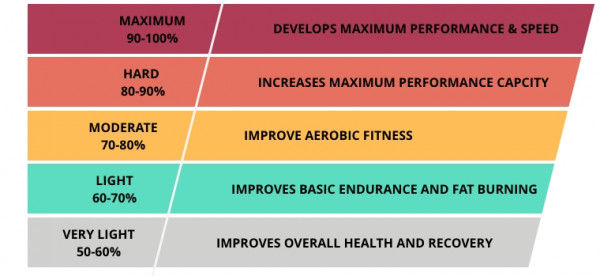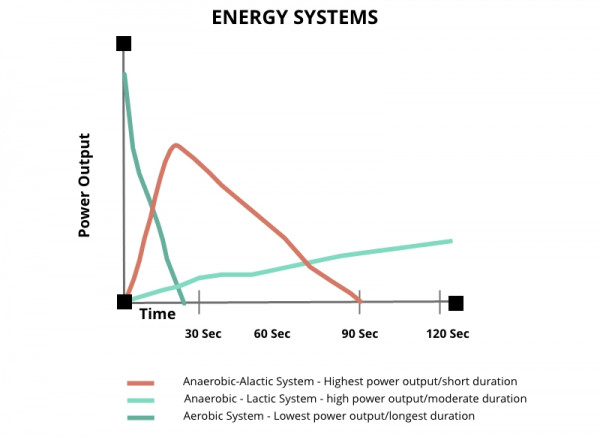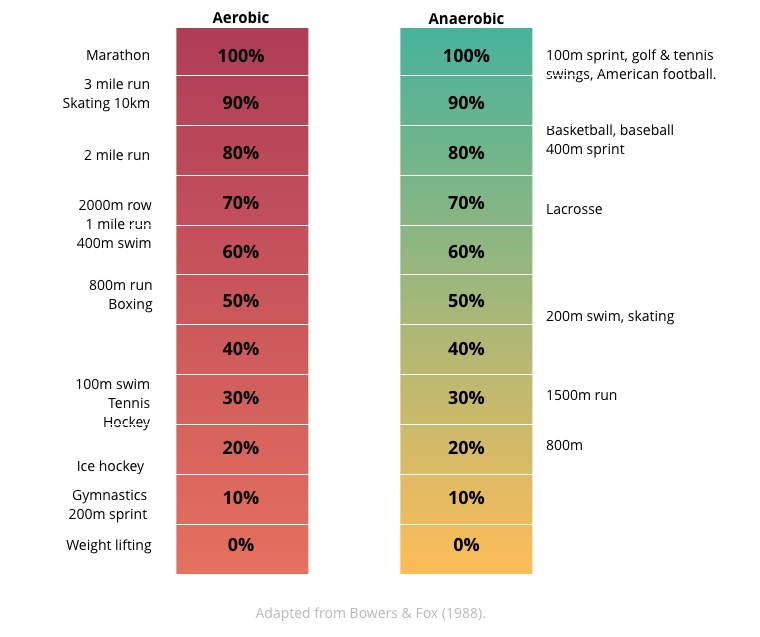Cardiovascular endurance
Learn how to optimise your training to increase your endurance and recover faster.
Benefits of cardiovascular endurance
Cardiovascular endurance is an indicator of overall physical health. Tests can monitor how well the circulatory (heart) and respiratory (lungs) systems perform during moderate to high intensity exercise. Other names for cardiovascular endurance include cardiorespiratory fitness, cardiorespiratory endurance, aerobic fitness or ‘cardio’.
Improved cardiorespiratory fitness is achieved by both aerobic and anaerobic exercise.
Aerobic exercise. Sustained muscle activity that require oxygen.
Anaerobic exercise. Does not require oxygen, and are achieved through short bouts of high intense activity.
Most activities throughout the day are aerobic in nature such as walking, cleaning, gardening etc. Regular activity throughout the day improves the delivery of oxygen to the working muscle.
Benefits of training
Benefits of cardio respiratory training can lead to:
- A stronger heart and lower resting heart rate
- Ability to maintain a healthy body weight and body fat percentage.
- Help manage stress
- An increased aerobic capacity and muscle endurance improving ones performance
- Improved performance in physically demanding jobs
- Decrease risk of metabolic disease such as diabetes, or heart disease
- Help improve mood, alleviate fatigue and improve sleep quality
Cardiovascular Endurance is one of the five basic components of fitness. The other components are: muscular endurance, muscular strength, body composition, and flexibility. It is common for people to regard cardiovascular endurance as the most important component of fitness to be developed. Low Endurance capacity leads to fatigue, even in activities that are not aerobic. Fatigue is a major deterrent to optimal performance. Even minor fatigue can hinder total performance:
- Muscular strength is decreased
- Reaction and movement times are prolonged
- Agility and neuromuscular coordination are reduced
- Whole-body movement speed is slowed
- Concentration and alertness is reduced
This doesn’t just affect physical performance for athletes or military personnel in physically active roles; this also applies to those in sedentary roles and individuals within their everyday activities and work.
Training using heart rate
Your heart rate can be used as a measure of exertion during exercise, and can be a helpful way to ensure you are achieving the right training stimulus. Heart rate monitors are becoming more accurate and these can help you work out the intensity and pace of exercise and exertion required in training to build cardiac endurance. Below is a guide to both heart rate percentages and the Borg rating of perceived rate of effort and intensity of the exercise.
| Rating | Exertion Level | Talk Test | % of max HR |
|
10 9 |
Difficult to continue, able to maintain only 10-30 seconds. | Can't talk, gasping for breath. | 86 - 100 % |
|
8 7 |
Uncomfortable to continue, but able to maintain for 5 - 10 mins. | Broken sentences, heavy breathing. | 76 - 85 % |
|
6 5 |
Exercise is tough, but able to maintain for at least 30 mins. | Only able to complete 1 2 sentences, moderate shortness of breath. | 61 - 75 % |
|
4 3 |
Comfortable to maintain for at least 60 mins. | Takes more effort to talk, slight shortness of breath. | 51 - 60 % |
|
2 1 |
Comfortable to maintain for an extended period of time. | Normal talking and breathing. | 40 - 50 % |
Working out your Heart Rate Zone using Karvonen formula
Age-Predicted Max HR – 220- ___ your age = _________ BPM
60% max HR = _______ max HR x .60 = ______ BPM
90 % max HR = ______ max HR x .90 = ______ BPM
Target HR Zone is _______ to _______ BPM
Note. This is only a guide, it is impossible to accurately obtain specific heart rate ranges without testing within a laboratory with regular intervals. These percentages are to give you a guide of the approximate level to train in to get the right training response. Through training you will also likely establish the training level by feel or a perceived rate of exertion as explained above.

Aerobic fitness should make up the majority of your training if you want to build your fitness.
Aerobic and anaerobic training system
Within the military, general training should allow for both aerobic and anaerobic training. For those required to perform at a high intensity, short duration and under heavy load, a program based solely on running will not provide sufficient training or support for high performance. However, because aerobic fitness is the basis for all training, an endurance based program which utilises anaerobic development alongside this is the best method to maximise performance in the military environment.
There are many ways to develop cardio-respiratory fitness through both aerobic and anaerobic conditioning.
- Examples of anaerobic training are speed and interval training, individual movement techniques, and negotiation of obstacles.
- Examples of aerobic training are foot marching, sustained running, cycling, and swimming.
Understanding of energy systems
The body uses two main energy systems, aerobic and anaerobic - which breaks down into two further parts.

Anaerobic energy system
The anaerobic system is used during high-intensity exercise where energy demands are higher than aerobic metabolism. (The body’s process in which oxygen is used to make energy). This system is used when doing short activities like sprinting and doesn’t require oxygen to perform. This can produce the by product called lactic acid, and when the build up of lactic acid becomes too great, the body will slow to a rate where it can effectively remove the by product from the body using oxygen.
Aerobic energy system (oxidative)
The Aerobic system is the most complex of the energy systems and most predominant system used to create energy throughout the day. Energy is produced by the body breaking down substrates with the aid of oxygen. It is used for moderate intensity exercise and is developed and maintained through cardiovascular exercise as discussed above. It is simply any exercise that increases heart rate. This could be walking, housework, gardening, running, hiking, or your daily job.
A brief description of the aerobic system.
Cardiorespiratory endurance, like strength, runs on a continuum between the ability to sustain high-intensity activity of short duration (anaerobic) and low-intensity activity of long duration (aerobic). The training demands to develop each are very different, and the demands on the body to produce this energy is also different.

In short, to see improvement in your performance in your occupation or sport, you must train specifically to see improvement. More information can be found here.